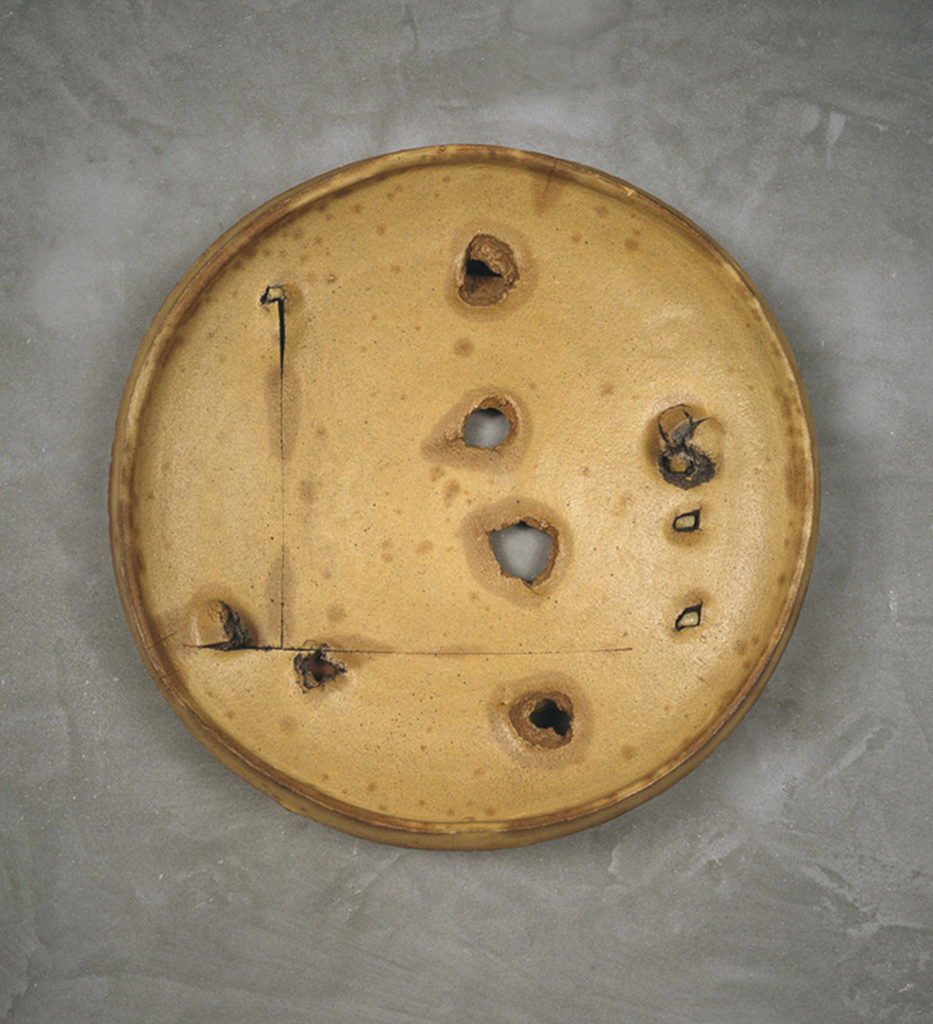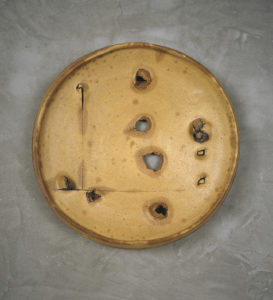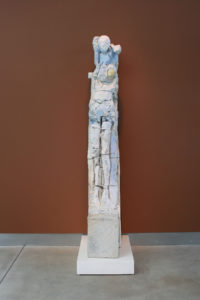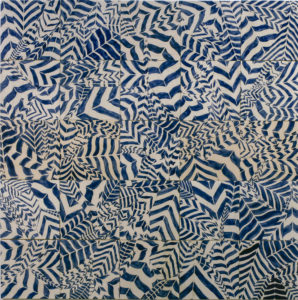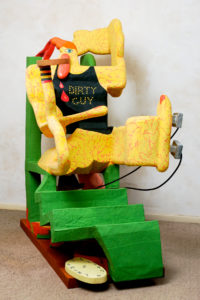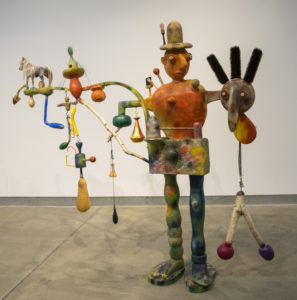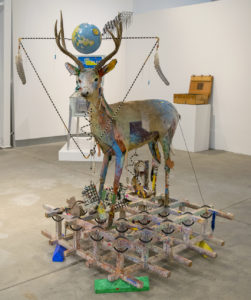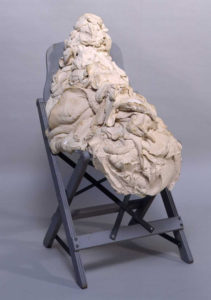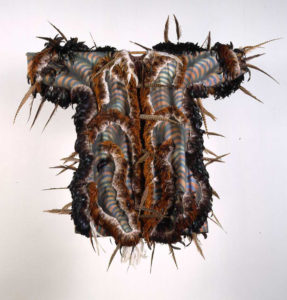About
In 1959, Peter Voulkos began teaching ceramics at the University of California at Berkeley, establishing a “pot palace” in the basement of the University Art Museum. It was a vibrant, round-the-clock scene where artists—including Stephen De Staebler, Jim Melchert, Manuel Neri, Ron Nagle and Richard Shaw, among others—gathered to talk about art and life. Voulkos performed vivid demonstrations of his creative process and at night, when he wasn’t working, sipped scotch and played flamenco guitar with his fellow artists.
“Pete was the magnet for all this creative energy,” said Ron Nagle, whose small, intricate pieces are the opposite of Voulkos’ ruggedly beautifully—and resolutely non-functional— stacked pots and slashed plates. “He was the real deal, a consummate artist. To be around that kind of energy and presence and charisma was inspiring. He didn’t talk a lot about art; he taught by example.” This performative pedagogy was key. He demonstrated that, as De Staebler later wrote: “The performance, the process of making anything—and most certainly art—is the art.”
Voulkos’ pot palace became the seat of a revolution in ceramics, leading to a reconsideration of clay from the identity of a utilitarian craft to fine art. He and his disciples trusted the material and their intuitive power with it, committing themselves to the energy that grew from this interaction.
"Pete was the magnet for all this creative energy." — Ron Nagle
